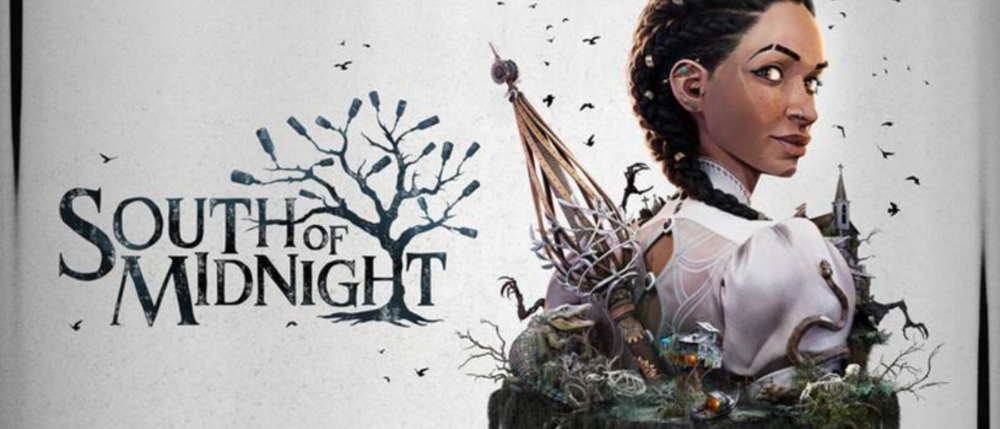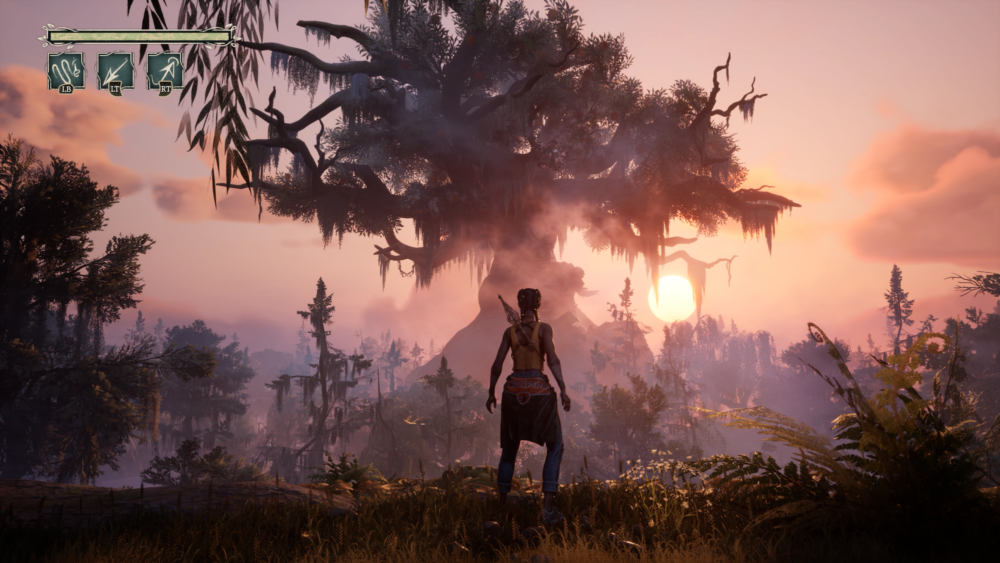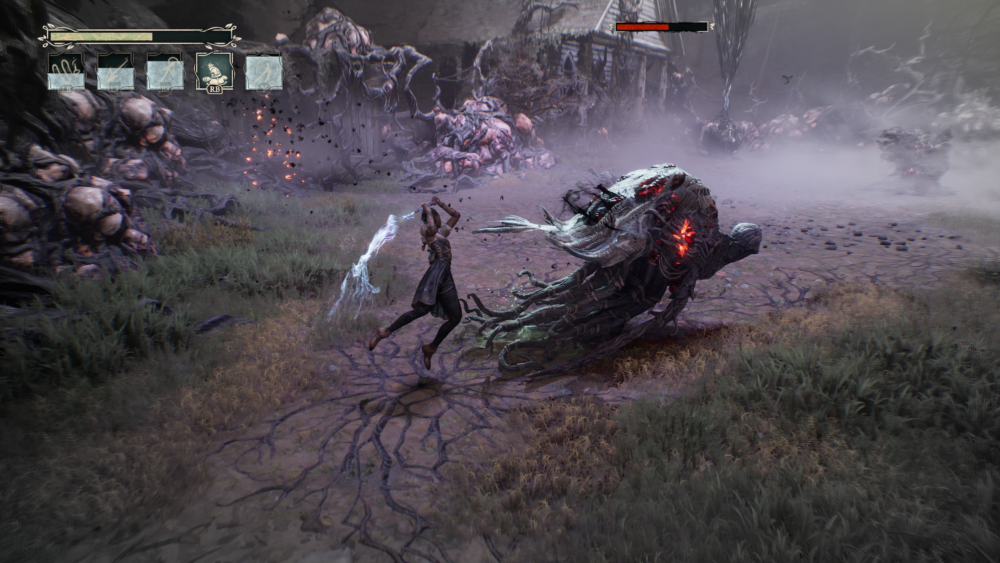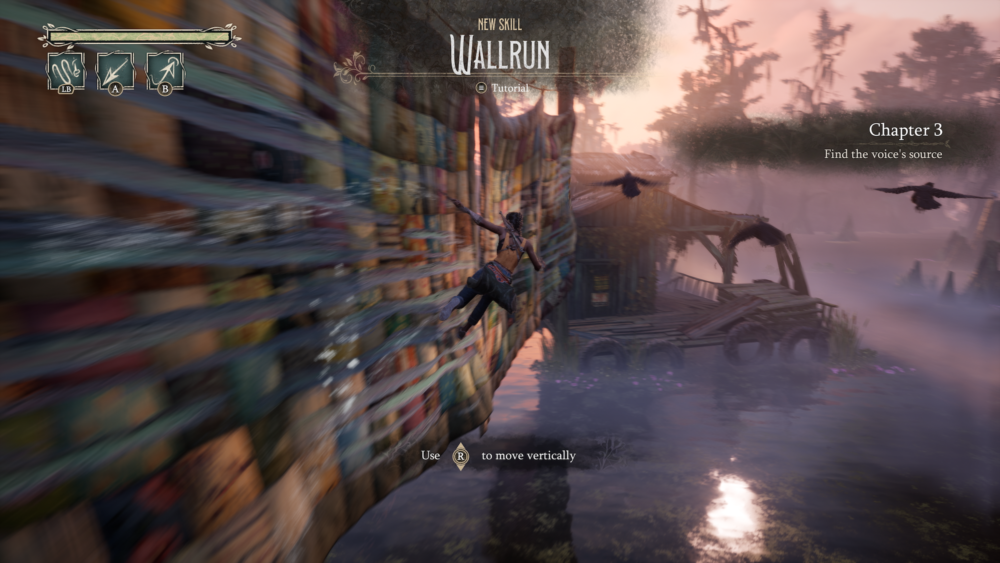
Confetti’s Cozy Corner: South of Midnight
South of Midnight is a beautifully woven piece of art that encapsulates the true meanings of representation, magic, and folklore. Developed by Compulsion Games and published by Xbox Game Studios, this 3rd person action-adventure is rich in Deep Southern gothic dark fantasy and transports the protagonist, Hazel, on a life-changing journey through the mystical Bayou.
Within the first 30 seconds of starting my playthrough, I felt my shoulders relax as we were introduced to Hazel in her home and got glimpses of her interests and personality. Hazel’s home, exemplified through the beautiful stop-motion animation style, feels filled with warmth and references to Black icons, athletes, some nerdy posters, and so much more! There are family photos everywhere with some slight clutter that immerses you into Hazel’s world of a typical teenage track star entering young adulthood.
The gameplay shifts between platformer linear pathways through the beautiful environment, arena battles, and storytelling as Hazel awakens her Weaver abilities and has a mission thrust on her shoulders which she must see through to the end, no matter what.

Hazel’s Weaver abilities are visually beautiful, straightforward, and easy to pick up through the repetition of the arena-like battles. Throughout the journey, Hazel acquires tools that give her access to various abilities she uses to battle Haints (aka spirit monsters), help legendary creatures of Deep South folklore, and solve puzzles. The combat is relatively easy, with some of the cool-down timers for abilities feeling a bit brutal, not being an area where South of Midnight shines.
The Weaver abilities include Strand push and pull, summoning a familiar to help you fight [Crouton], an area effect ability, and an ability that traps Haints [Weave]. Each ability has a different cool-down that had me mostly relying on melee attacks, which at times felt a bit dull in comparison.

However, Weaver abilities outside of combat which are used to traverse the environment and explore off-beat paths felt smooth, rewarding, and fun! Hazel gains abilities that allow her to walk on walls and pull herself around with her Weave Pull ability – like a grappling hook.
Sometimes throughout the story, Hazel will find herself needing to escape a threat. The gameplay at times would turn into a running sequence where multiple abilities would be needed to complete the objective. These sequences revealed the only other major shortcoming I have with South of Midnight… the camera.
I often reflected on the time I played the first Kingdom Hearts and had to deal with a camera that sometimes felt like it had a mind of its own. Oftentimes, it would situate where my field of view was blocked, making it difficult to see the next interaction I would need to move Hazel forward through a challenge. In combat, the camera will lock on a target, but still move in a wonky way that does not help visually when trying to fight Haints.
An area in which South of Midnight shines is its accessibility options. There are options to adjust the camera and have it lock on, and ways to make camera angles more manageable. There are many caption options, options to skip boss fights, color profiles, menu narration, navigation assistance, and more. I like large captions and the ability to make adjustments to text, font, and their background, so I was glad to see many accessible options for gamers to choose from if needed.

Where South of Midnight further shines is the weaving of storytelling that gets more fantastical the deeper you go. I often found myself saying the further Hazel gets from her hometown of Prospero, which is being hit with a natural disaster, the deeper I feel she is stepping into a ‘Wonderland-like’ environment that feels comparatively beautiful, dark, and perhaps a bit absurd, like some areas in Alice: Madness Returns.
From the beginning, I was invested in where the story would take me and what themes would be highlighted throughout. Without spoiling plot points, South of Midnight is a coming-of-age story highlighting themes of loss, familial bonds, and getting in touch with one’s roots. How that all comes together is beautifully woven from the start of the game to the end of the credits.
There are moments where dark aspects of Southern history are touched on, such as the brief showing of slave quarters. I felt that what was done was handled as respectfully as one could in a video game, and when in sensitive historical places, the environments cannot be tampered with and come with a lore tidbit I could open and read any time for more context.
South of Midnight’s environment is beautiful and feels like a place created with much thought, research, and care. It does not feel like aspects of Black and Southern culture, history, and folklore have been thrown into a game to give surface-level representation. South of Midnight is what happens when time, research, and a high standard of care are put into representing art which reflects or references real people’s culture, and I feel sets a high standard that video game studios should follow if they choose to go down a similar path.

South of Midnight is the first game where I felt thought of and represented throughout a game, especially someone whose familial roots have origins in Louisiana. This includes its environment, characters, music, script, and themes. It is because Hazel and the other characters express and carry themselves as I do, use very familiar phrases to me, and the majority of the cast looks like me, that I was able to have a level of immersion in an RPG I have never felt before.
South of Midnight tells a story that does not use Black stereotypes to simply convey a story, it truly allows Hazel, the unambiguously Black girl to shine in a remarkable story of folklore, fantasy, and magic. I hope to see more stories told with this level of care and representation within the games industry.







